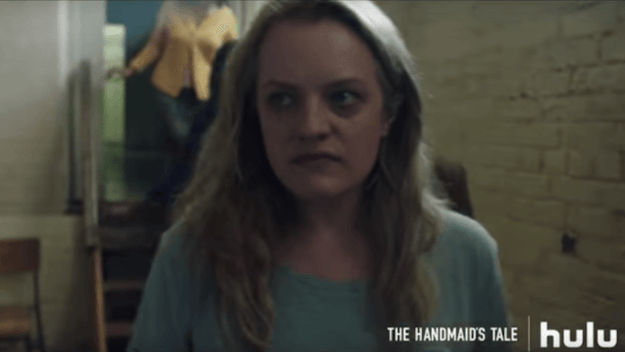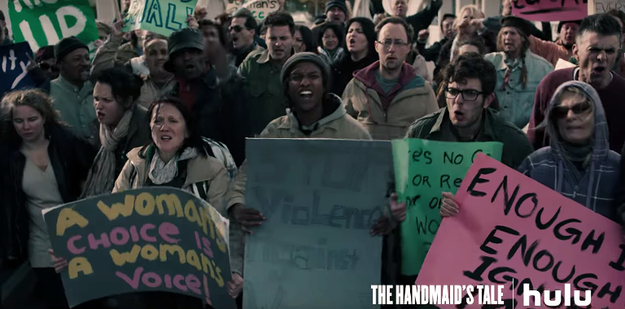
1. Margaret Atwood makes a cameo in the pilot episode.
She’s the character who slaps June for not initially blaming another character for being raped.
2. The red outfits that the Handmaids wear in the book and TV adaptation are a nod to Mary Magdalene, a repentant sinner in the Bible.
3. Whereas the blue that the wives wear is meant to be a nod to the virgin Mary, and how she’s often shown in art as wearing blue.
George Kraychyk / Hulu
4. If you’re wondering about those names, “Offred,” “Ofglen,” “Oferic,” the Handmaids’ names denote which Commander owns them. (So, “Offred” is “of Fred,” for example.)
5. Reed Moran, who directed the first three episodes, was also a cinematographer on Beyoncé’s Lemonade.
She shot the “Sandcastles” portion of Lemonade.
7. The original title of the book was simply Offred.
Atwood changed the title, partly to honor Canterbury Tales and also as a nod to fairy tales.
8. In the book, Offred’s real name is never revealed, but many readers picked up on a scene in the book that mentions the name “June,” which is why we hear it in the TV series.
Atwood herself has said she never intended to name Offred “June,” but is fine with readers using it.
9. There’s a women’s march that occurs in The Handmaid’s Tale, which was filmed before Donald Trump was elected president and well before the actual Women’s March on Washington.
10. In the book, Serena Joy and her husband, the Commander, are much older than Offred, but the showrunner decided to make them the same age so that Serena and Offred would be in direct competition.
11. The Handmaid’s Tale has been translated into 40 different languages, and has a film, opera, and ballet version. It’s also currently being adapted into a graphic novel.
12. Margaret Atwood doesn’t consider her book entirely a work of fiction. She said of the plot, “Everything I wrote in that book was happening at that time, or had already happened.”
Atwood drew inspiration from 17th century puritan America, polygamy, Ceauçescu’s Romania where mandatory childbirth was enforced, and pushback against feminism happening in the ’70s and ’80s, among other things.











